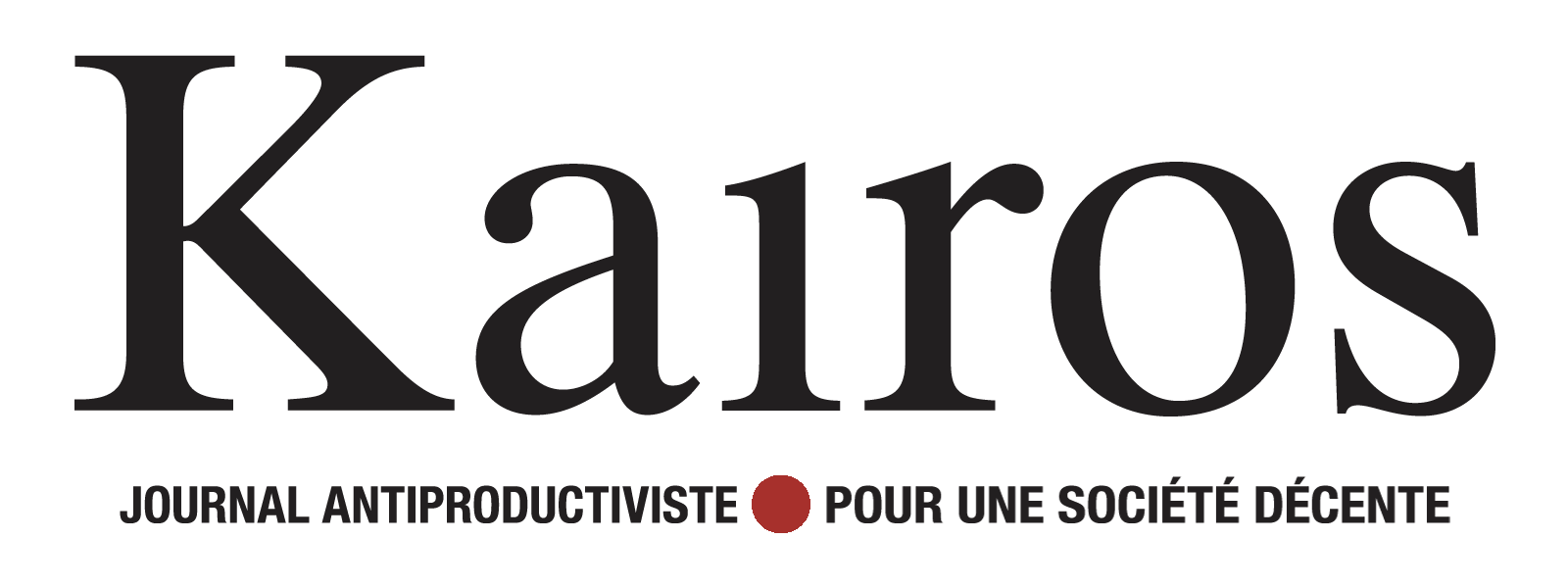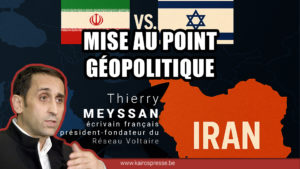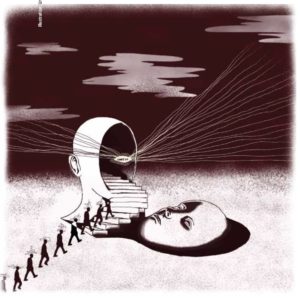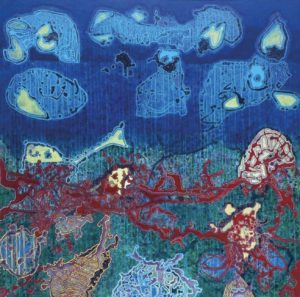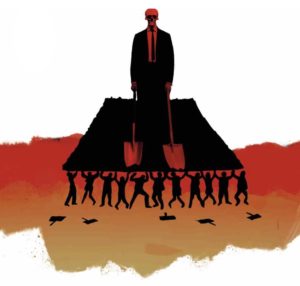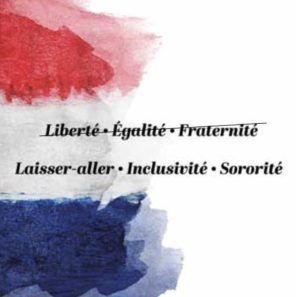PARTIE 2/3
Après nous être penchés, dans la première partie de l’article, sur les rapports entre Russie-OTAN, nous allons à présent considérer le conflit en Ukraine en tant que tel. Comme indiqué dans la première partie, toutes les données qui suivent se basent sur les médias les plus classiques, où une bonne part des informations significatives est présente, mais bien trop rarement, de sorte à y être bien trop peu visibles.
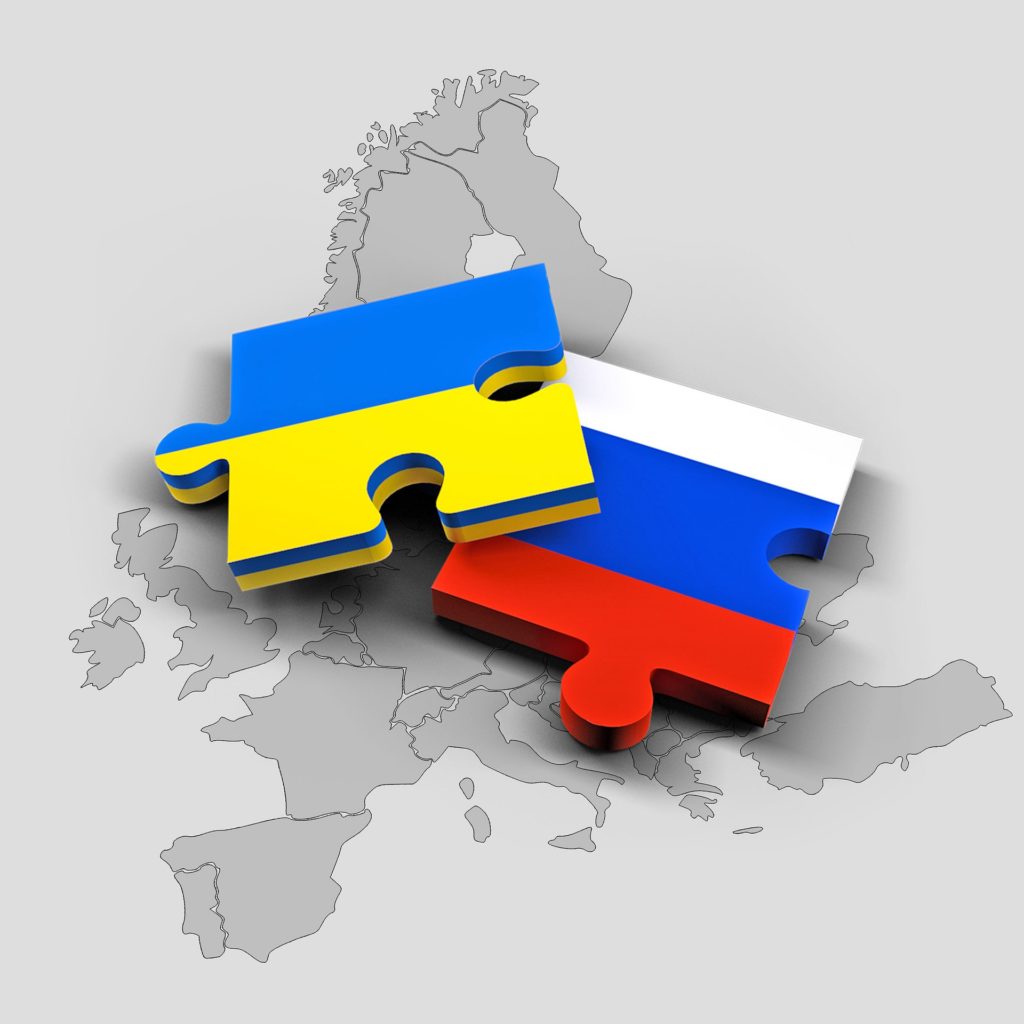
Arrière-plans historiques et État profond
Revenons d’abord en 2014 et au renversement du gouvernement de Viktor Ianoukovitch (qui était arrivé au pouvoir suite à des élections), puis à son remplacement par un gouvernement visant le rapprochement avec l’Occident exclusivement. Rappelons que Ianoukovitch avait tenté de coopérer avec la Russie comme avec l’ouest (et n’était donc pas qualifiable de « pro-russe ». Ses rapports avec la Russie n’étaient d’ailleurs pas aisés)(1). En 2013, il comptait signer un traité d’association avec l’Union européenne, ainsi qu’intégrer une union douanière proposée par la Russie. Or (ce dont on parle très peu), l’UE avait refusé la signature du traité si, en même temps, l’Ukraine entrait dans l’union douanière en question. Ianoukovitch fut donc forcé à choisir. Il opta finalement pour l’accord avec la Russie(2). Ce choix provoqua, début 2014, une protestation populaire qui tourna en affrontement, le tout ayant mené au coup d’État évoqué.
Mais il faut donner d’autres précisions historiques encore. En 2013, une secrétaire d’État états-unienne a déclaré que son pays avait, depuis 1991, investi 5 milliards de dollars en Ukraine(3). Officiellement, il s’agissait surtout de promouvoir la démocratie. Mais il faut savoir que cet argent a é té distribué et utilisé par des organismes comme la National Endowment for Democracy (NED)(4) et l’Open Society Foundation (OSF) du milliardaire Georges Soros(5). Or, le premier directeur de la NED a déclaré sans ambages que le rôle de cette fondation est de prendre le relais des actions clandestines de la CIA à l’étranger(6). Et concernant l’OSF, Soros se vanta lui-même, sur CNN, que cet organisme a contribué, en 2014, aux événements qui ont mené au changement de gouvernement qui vient d’être décrit(7). Lisons encore cet extrait d’un article du Soir, sur un premier essai de déstabilisation : « Ukraine – Des activistes internationaux ont contribué à la « révolution orange » (…) [Ils sont] d’autant plus habiles et efficaces qu’ils sont solidement encadrés. Ils ont ainsi bénéficié en Ukraine du soutien financier d’une organisation basée à Washington et très proche du gouvernement américain. (…) L’aide étrangère (…) s’étend également à la formation.(8) »
Le changement de régime concerné était donc manifestement voulu et planifié. Concernant le fait que les protestations ont tourné en affrontement, il faut s’arrêter sur la tuerie commise par des snipers qui ont abattu plusieurs dizaines de manifestants et policiers, sur la place Maïdan (événements déclencheurs des affrontements). En effet, cette tuerie est très probablement à imputer à des porteurs du nouveau pouvoir ou à leurs alliés, comme cela ressort d’une étude d’un politologue de l’université d’Ottawa. Cette étude se base notamment sur les analyses de médecins ukrainiens opérées sur les victimes, les balles et leurs impacts, ainsi que sur des enregistrements vidéos, le tout ayant permis de déterminer que les tirs provenaient d’un immeuble tenu alors par les opposants au gouvernement(9). Notons aussi que ces analyses ont été prises très au sérieux dans une conversation entre Catherine Ashton(10) et le ministre des Affaires étrangères estonien(11).
L’ingérence états-unienne est aussi très clairement ressortie d’une autre conversation enregistrée, où la secrétaire d’État étasunienne évoquée plus haut fait savoir qui a été choisi par les USA pour être chef du nouveau gouvernement ukrainien(12).
Rappelons que ce sont ces événements et le changement de régime consécutif qui ont déclenché la guerre dans l’est de l’Ukraine. En effet, la majeure partie des habitants de cette région (essentiellement russophone) a refusé ce coup d’État, ainsi qu’une politique du nouveau pouvoir tendant à imposer la langue ukrainienne(13). Ils ont alors déclaré leur indépendance, suite à quoi le nouveau gouvernement a débuté contre eux la guerre en question, tandis que la Russie soutenait ces autonomistes. Cette guerre a causé au moins 13.000 morts(14).
Notons aussi qu’un héritage historique favorise les divisions et la violence de cette guerre : une part de l’Ukraine avait lutté contre la domination russo-soviétique du régime stalinien, une autre part contre l’Allemagne nazie. Le pays a fortement souffert des exactions de ces deux puissances. Et malheureusement, ceux qui résistaient aux staliniens se sont alliés aux nazis, tandis que ceux qui combattaient les nazis étaient du côté des russo-soviétiques. Cet historique contribue à expliquer la présence en Ukraine, aujourd’hui encore, de mouvements néonazis et anti-Russes(15), ainsi bien sûr qu’une crainte et une hostilité particulière, à l’est du pays, à l’égard de tels mouvements.
« Ce n’est qu’en contemplant l’humanité dans sa totalité qu’on devient humain (…). Sans cela, les individus restent des enfants, les peuples et communautés des barbares. »
Ján Kollár
Des souffrances et injustices très peu visibles
Voyons d’un plus près cette guerre qui a sévi durant 8 ans dans l’est de l’Ukraine. L’historique évoqué peut impliquer des circonstances atténuantes pour les Ukrainiens rejoignant le nazisme. On est cependant allé bien au-delà de circonstances atténuantes : des mouvements néonazis et anti-Russes évoqués ont été intégrés à l’armée et au nouveau pouvoir ukrainien(16). Ainsi, on ne devrait pas s’étonner des signalements de graves exactions commises sur ceux qui contestent ce pouvoir. Il Manifesto parle d’une série de massacres ou agressions perpétrés sur ces gens, dans l’est de l’Ukraine : « Villages mis à feu et à sang, militants brûlés vifs à la Maison des Syndicats d’Odessa, civils sans armes massacrés à Mariupol, bombardés au phosphore blanc à Donetsk et Lugansk.(17)» Ces descriptions se recoupent notamment avec ce qui ressort du travail de la journaliste Anne-Laure Bonnelle qui a passé plusieurs séjours dans le Donbass, après le changement de pouvoir de 2014(18). Il est très regrettable que le documentaire qu’elle a réalisé sur cette région(19), et qui complète très bien les discours dominants, ne soit pas diffusé sur les chaînes publiques. Pourtant, sa toute récente réalisation précédente, sur un sujet moins sensible, avait été bien accueillie par les médias les plus classiques(20).
Bien sûr, puisque les conflits génèrent la haine, on y trouve le plus souvent des exactions de la part des différents protagonistes. Mais les inégalités dans les traitements médiatiques concernés ne peuvent que révolter.
En 2019, un nouveau gouvernement ukrainien a été élu, mais il manifeste la même hostilité que son prédécesseur vis-à-vis de la Russie, ainsi que vis-à-vis des Ukrainiens russophones exigeant plus d’autonomie et le respect de leur langue. Le nouveau président a notamment soutenu, en 2021, l’adoption d’une loi tendant à imposer la langue ukrainienne(21). Plus grave encore : il n’a pas écarté les néonazis des forces ukrainiennes.
Ce gouvernement et le précédent portent également une responsabilité déterminante dans le non-respect des accords de paix de Minsk. Ceux-ci prévoyaient notamment de donner plus d’autonomie aux provinces orientales du pays, ainsi que des élections locales(22). Malgré le fait qu’il avait signé les accords en question, le pouvoir ukrainien a fait savoir qu’il ne comptait de toutes façons pas accéder à ces demandes de davantage d’autonomie(23).
Bâtir un État pour tous
Pourtant, satisfaire de telles demandes est une condition élémentaire, si l’on souhaite dépasser des tensions et conflits aux dimensions communautaire et historique importantes. Ces dimensions interagissent avec les problèmes géopolitiques et, bien souvent, sont instrumentalisées par les puissances hégémoniques. C’est particulièrement vrai dans les régions d’Europe orientale, où de si nombreuses communautés cohabitent, communautés dont les zones de peuplement ne coïncident en général pas avec les frontières, mais forment de vraies mosaïques. Ainsi, dans ces régions, libérer le domaine de l’État de la dimension ethnique est plus important encore qu’ailleurs.
À cet égard, il est bon de relire un penseur et poète comme Ján Kollár, issu précisément de ces régions et qui écrivit notamment ces belles et fameuses lignes : « L’individu entre ses quatre murs, la communauté entre ses frontières ne peuvent pas s’éveiller ; ce n’est qu’en contemplant l’humanité dans sa totalité qu’on devient humain ou peuple au plus beau sens de ces mots ; sans cela, les individus restent des enfants, les peuples et communautés des barbares. Des communautés et des peuples qui se ferment aux influences des autres et au contact avec eux sont comme des habitations où n’entre aucun air frais.(24) »
Daniel Zink, ancien coordinateur de l’asbl Carrefour des Cultures
Avec la collaboration d’Alain Adriaens
- https://www.bfmtv.com/international/asie/russie/ukraine-pourquoi-ianoukovitch-avait-tourne-le-dos-a-l-europe_AN-201403050026.html
- Ibid.
- https://www.ouest-france.fr/europe/ukraine/crise-en-ukraine-5-questions-pour-expliquer-l-origine-des-tensions-93459874–2dba-454d-adc8-c73640671ad3
- https://www.ned.org/ned-stands-in-solidarity-with-ukraine/
- https://www.opensocietyfoundations.org/newsroom/the-open-society-foundations-in-ukraine
- https://www.washingtonpost.com/archive/opinions/1991/09/22/innocence-abroad-the-new-world-of-spyless-coups/92bb989a-de6e-4bb8-99b9-462c76b59a16/ (pour un commentaire en français : http://www.monde-diplomatique.fr/2007/07/CALVO_OSPINA/14911).
- https://www.youtube.com/watch?v=l0Jtv6HEWQ4
- https://www.lesoir.be/art/ukraine-des-activistes-internationaux-ont-contribue-a-l_t-20041221-Z0Q3M6.html
- https://www.les-crises.fr/de-maidan-a-maidanek-ou-sont-passes-les-snipers-de-lhotel-ukraine-au-gouvernement/
- Jusque 2014 Haute représentante de l’Union pour les affaires étrangères et la politique de sécurité.
- https://www.theguardian.com/world/2014/mar/05/ukraine-bugged-call-catherine-ashton-urmas-paet
- https://www.lalibre.be/archives-journal/2014/02/07/une-conversation-qui-la-fout-mal-M6KEY3CHAVER7AEHBSMWPFMHIE/
- https://www.axl.cefan.ulaval.ca/europe/ukraine-loi-lng-2012.htm
- https://www.un.org/press/fr/2020/cs14099.doc.htm
- https://www.cairn.info/revue-outre-terre2-2014–4‑page-292.htm ; https://www.cairn.info/revue-autrepart-2008–4‑page-59.htm
- https://www.lefigaro.fr/international/2014/02/26/01003–20140226ARTFIG00463-l-opposition-ukrainienne-presente-son-gouvernement-de-transition.php ; https://www.lesoir.be/428941/article/2022–03-09/le-bataillon-azov-ou-la-face-sombre-dune-certaine-ukraine
- https://ilmanifesto.it/ucraina-bomba-usa-in-europa/. Traduction en français : https://www.investigaction.net/fr/ukraine-bombe-usa-en-europe/
- Ukraine – Ceux qui appellent à la guerre ne la connaissent pas, Sudradio.fr, 08/03/2022 (sur Youtube notamment).
- http://www.film-documentaire.fr/4DACTION/w_fiche_film/49339_1
- https://www.lefigaro.fr/international/n‑oublions-pas-l-armenie-20210423
- https://www.lefigaro.fr/flash-actu/kiev-adopte-une-loi-renforcant-l-usage-de-l-ukrainien-20190425
- https://www.cnews.fr/monde/2022–02-09/crise-en-ukraine-que-prevoyaient-les-accords-de-minsk-1180778
- https://www.francetvinfo.fr/monde/europe/manifestations-en-ukraine/crise-en-ukraine-que-prevoyaient-les-accords-de-minsk-signes-en-2015_4975245.html
- Kollár, J., Über die literarische Wechselseitigkeit zwischen den verschiedenen Stämmen und Mundarten der slawischen Nation, Weingart , 1837 (version allemande écrite par l’auteur peu après la rédaction de la version tchèque – de 1836), p. 48. (en anglais, sous le titre Reciprocity Between the Various Tribes and Dialects of the Slavic Nation, Slavica Publishers, 2008).
